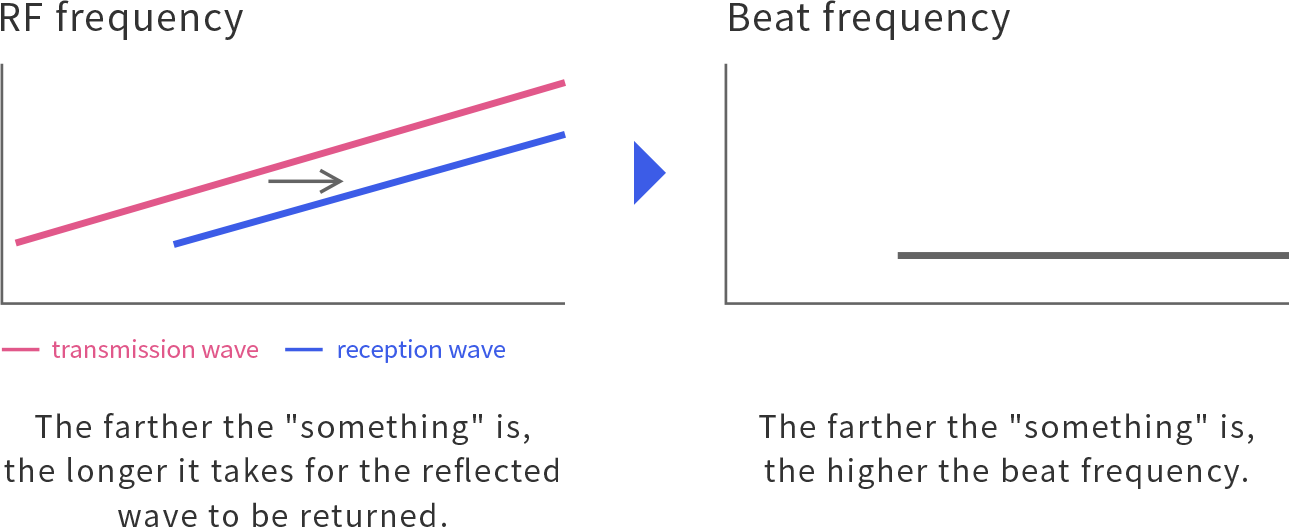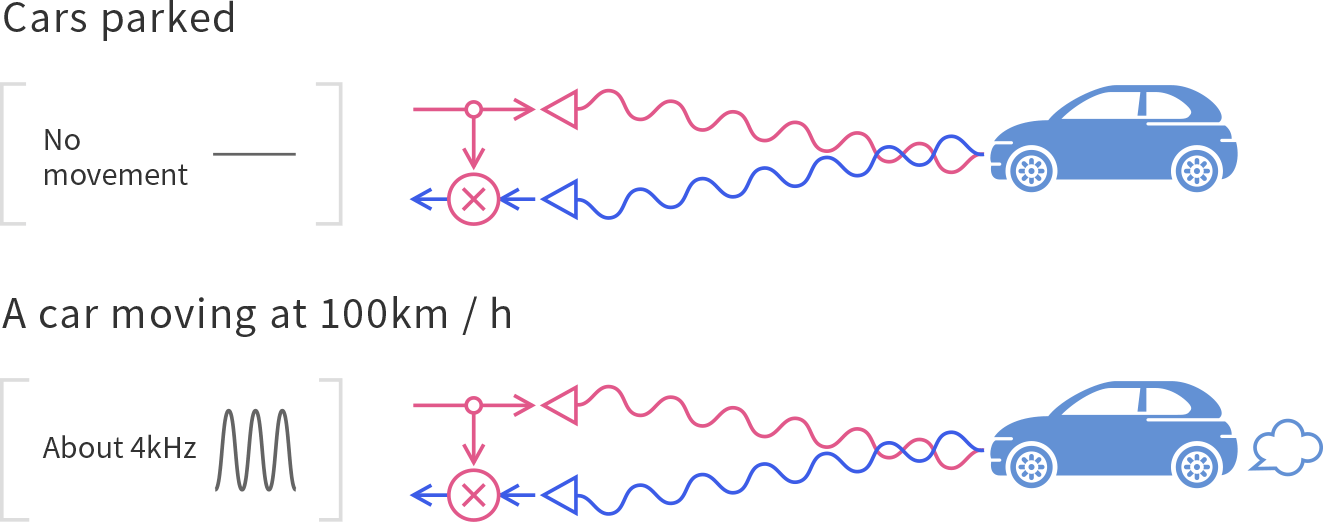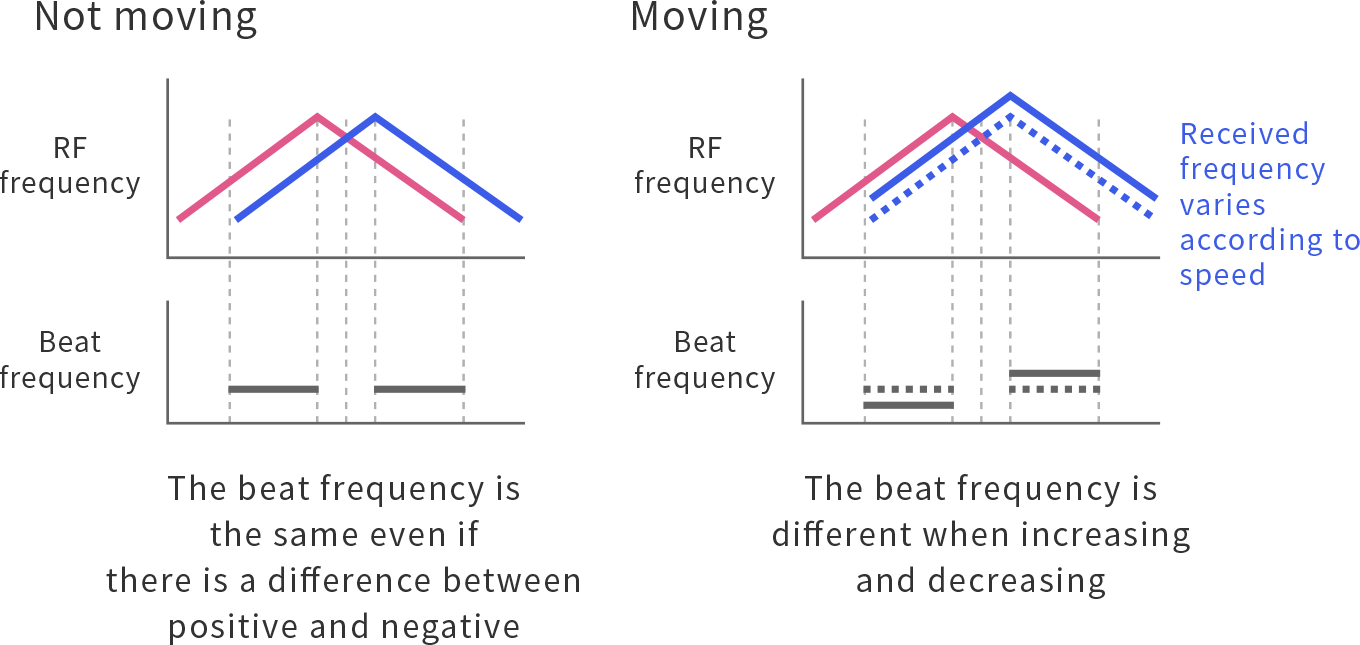The FMCW method is a method that measures the distance and speed of "something" from the frequency of the received wave that is reflected by "something" while changing the transmission frequency. As the transmission frequency is constantly changing, it is possible to measure the distance by knowing the frequency of the received wave (as it is possible to know how many seconds ago it was transmitted). If the frequency to be transmitted is increased by a certain value, the amount of change in the transmission frequency until it is reflected and returned can be known by subtracting the frequency of the transmitted wave. It is possible to measure the distance by this amount of the change. This amount of change is called the beat frequency.

However, as explained in the Doppler method, if "something" is moving, the received frequency changes depending on its speed, the actual beat frequency is influenced by the speed of "something" as well as the distance to. In order to solve this, by analyzing both the beat frequency measured while increasing the transmission frequency and the beat frequency measured while decreasing the transmission frequency, it is possible to measure the distance and speed. This is the same as having two equations to solve a quadratic equation.
While the effect of the speed of "something" on beat frequency is proportional to the speed, the effect of the distance on the beat frequency is increase rate in the transmission frequency. There is also a method reduces the effect of the speed of "something" on the beat frequency by increasing the increase rate of transmission frequency, which is called the first charp.






